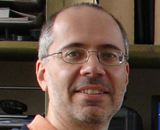 My list of anaesthetists who are famous for the wrong reasons currently has two categories and four entries.
My list of anaesthetists who are famous for the wrong reasons currently has two categories and four entries.
The first category, “Anaesthetists convicted of killing Michael Jackson,” would have just one entry and is something of a misnomer, since Conrad Murray wasn’t actually an anaesthetist, though the anaesthetic propofol was very much involved.
The second category, “Anaesthetists who have broken records for research misconduct,” contains the other three: Scott Reuben (22 retractions), Joachim Boldt (89 retractions), and Yoshitaka Fujii (pushing 200 possible retractions).
Here, I ponder the question: why anaesthetists?
We’ll never know, of course. But here a few possibilities:
1. Swallows and summers
It may be that research misconduct is no more common in anaesthetists than in any other group. Anaesthesia is the largest single hospital specialty and so one is more likely to see an anaesthetist fall from grace than a surgeon or a paediatrician, all else being equal. Add to this the phenomenon whereby once something is noticed, people keep noticing it, even though its incidence hasn’t changed—aka the so-called “flesh-eating bug ‘epidemic'” of the early 1990s. (Against this hypothesis, I should point out that all else isn’t exactly equal; thus anaesthetists have fewer referrals to the GMC than surgeons, for example).
2. Fluke
Stuff happens, and when it does we try to impose patterns on it even when events are unrelated. So while it’s feasible that our unfortunate cluster of anaesthetic miscreants does represent an increase over what might be expected, it may still be just a chance occurrence, albeit unlikely. Perhaps someone cleverer than me can estimate how unlikely.
3. Bad apples
It’s possible of course that anaesthetists are more likely than others to break the rules. This could be for several reasons: they might be that way inclined to start with; they might have more opportunity to fiddle the books because of the nature of anaesthesia (with the potential to generate lots of data over a relatively short time period) or of anaesthetic research (which historically has tended to attract fewer and smaller grants from major funding bodies than many other specialties and possibly, therefore, less scrutiny); or they might be less closely supervised within academic anaesthetic departments—which, historically, have tended to be smaller and less well supported within institutions than others. I have no evidence for or against any of these.
4. Better policing
The final possibility is that—whether or not misconduct is more common in anaesthesia—we might be better at spotting it than in other specialties. Again, I have no evidence for this, except to say that as far as I know, the collaboration between the editors-in-chief of first 18 (in the Boldt case) and then 23 (in the Fujii case) journals is unprecedented. Certainly, since Reuben’s downfall, a core group of anaesthetic journals has formed whose editors-in-chief regularly share concerns over possible cases of misconduct. Already, our collaboration has led to the exchange of useful information and detection of problems on submission, rather than once suspect work is published.
Will we see more? Almost certainly. And almost certainly across all specialties.
Why anaesthetists? Why not?
Competing interests and acknowledgements: I am editor-in-chief of Anaesthesia, and a co-signatory of the joint editor-in-chief letters to Boldt’s and Fujii’s institutions. I was a member of the Committee on Publication Ethics Council until earlier this year. I am grateful to my fellow editors for suggestions as to why our specialty has featured so prominently recently.
Steve Yentis is a consultant anaesthetist in London and editor-in-chief of Anaesthesia.
